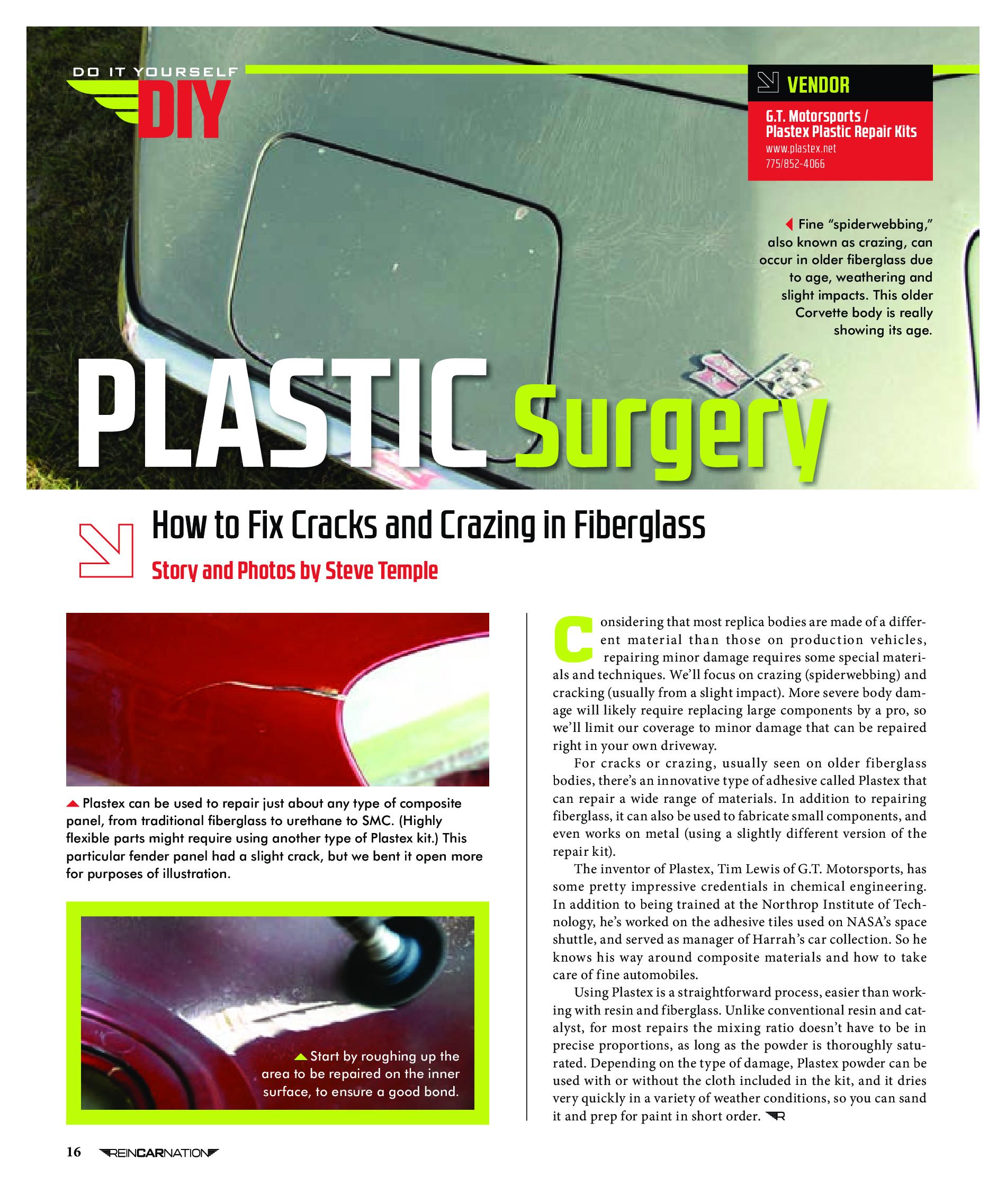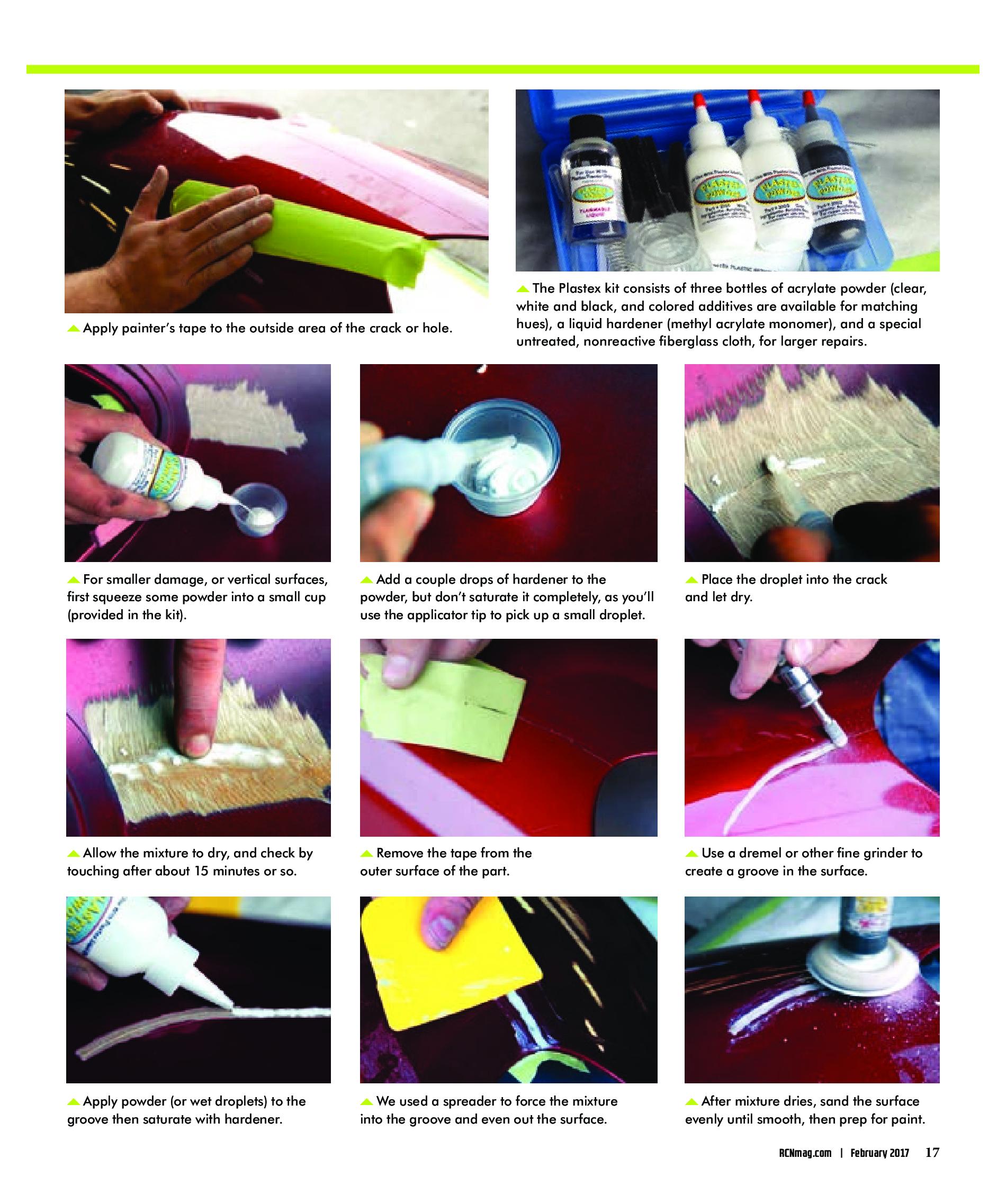

DO IT YOURSELF - PLASTIC SURGERY
Fine "spiderwebbing," also known as crazing, can occur in older fiberglass due to age, weathering and slight impacts. This older Corvette body is really showing its age.
How to Fix Cracks and Crazing in Fiberglass
Story and Photos by Steve Temple
Plastex can be used to repair just about any type of composite panel, from traditional fiberglass to urethane to SMC. (highly flexible parts might require using another type of Plastex kit.) This particular fender panel had a slight crack, but we bent it open more for purposes of illustration.
Considering that most replica bodies are made of a different material than those on production vehicles, repairing minor damage requires some special materials and techniques. We'll focus on crazing (spiderwebbing) and cracking (usually from a slight impact). More severe body damage will likely require replacing large components by a pro, so we'll limit our coverage to minor damage that can be repaired right in your own driveway.
For cracks or crazing, usually seen on older fiberglass bodies, there's an innovative type of adhesive called Plastex that can repair a wide range of materials. In addition to repairing fiberglass, it can also be used to fabricate small components, and even works on metal (using a slightly different version of the repair kit).
The inventor of Plastex, Tim Lewis of G.T. Motorsports, has some pretty impressive credentials in chemical engineering. In addition to being trained at the Northrop Institute of Technology, he's worked on the adhesive tiles used on NASA's space shuttle, and served as manager of Harrah's car collection. So he knows his way around composite materials and hot to take are of fine automobiles.
Using Plastex is a straightforward process, easier than working with resin and fiberglass. Unlike conventional resin and catalyst, form most repairs the mixing ration doesn't have to be in precise proportions, as long as the powder is thoroughly saturated. Depending on the type of damage, Plastex powder can be used with or without the cloth included in the kit, and it dries very quickly in a variety of weather conditions, so that you can sand it and prep for paint in shot order.

* Start by roughing up area to be repaired on the inner surface, to insure a good bond.
* Apply painter's tape to the outside area of the crack.
* The Plastex Kit consists of three bottles of acrylate powder (clear, white, black, and colored additives for matching hues), a liquid hardener (methyl acrylate monomer), and a special untreated, nonreactive fiberglass cloth, for larger repairs.
* For smaller damage, or vertical surfaces, first squeeze some powered into a small cup (provided in the kit).
* Add a couple of drops of hardener to the powder, but don't saturate it completely, as you'll use the applicator tip to pick up small droplet.
* Place the droplet into the crack and let dry.
* Allow the mixture to dry, and check by touching after about 15 minutes or so.
* Remove the tape from the outer surface of the part.
* Use a Dremel or other fine grinder to create a groove in the surface.
* Apply powder (or wet droplets) to the groove then saturate with hardener.
* We used a spreader to force the mixture into the groove and even out the surface.
* After mixture dries, sand the surface evenly until smooth, then prep for paint.





